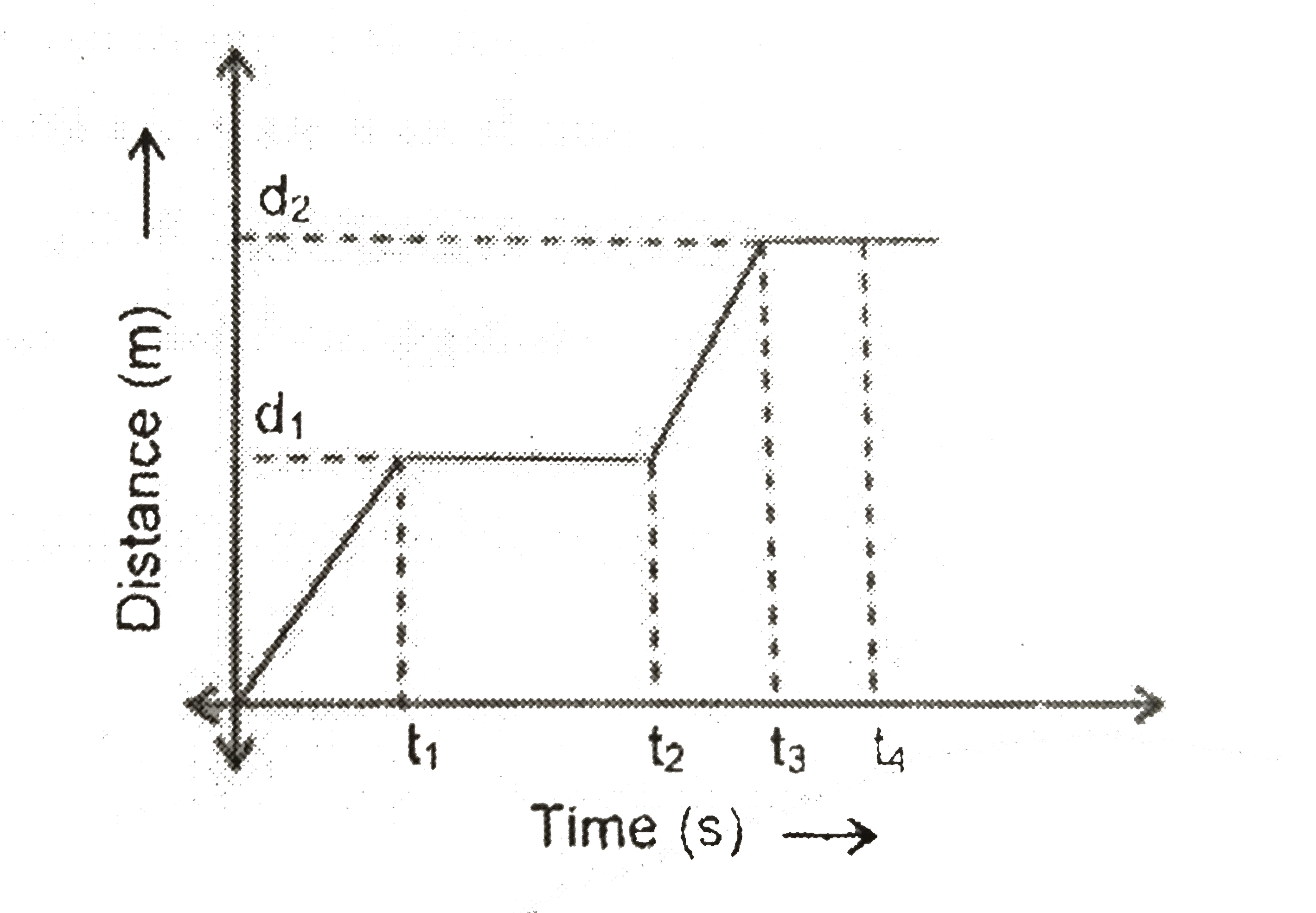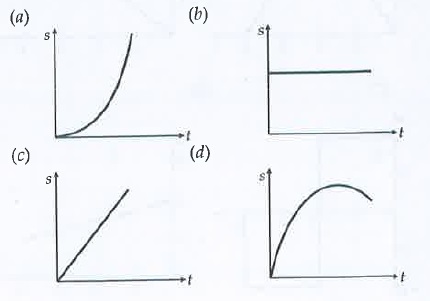Column A ColumnBA.Speeda.Uniform motionB.Timeb.Non-uniform motionC.Average speedc.km h−1D.Uniform speed in a straight lined.secondE. Freely falling bodye. Change in time periodF. Change in length of a pendulumf.Total distanceTotal time
The correct Answer is:A, B, C, D
A-c km h−1 is a unit of speed .
B-d Unit of time is second.
C-f,c average speed = total distance coverd/ total time km h−1 is a unit of average speed.
D-a An object moving along a straight line with aconstant speed is said to be in uniform motion .
E-b Freely falling body is an example of non-uniform motion.
F-e Change in length of a simple pendulum results in change in its time period.
Topper's Solved these Questions
- BOOK - PEARSON IIT JEE FOUNDATIONCHAPTER - KINEMATICSEXERCISE - Level 2 MCQ12videos
KINEMATICS
- BOOK - PEARSON IIT JEE FOUNDATIONCHAPTER - KINEMATICSEXERCISE - Level 218videos
KINEMATICS
- BOOK - PEARSON IIT JEE FOUNDATIONCHAPTER - KINEMATICSEXERCISE - Level 1 MCQ19videos
KINEMATICS
- BOOK - PEARSON IIT JEE FOUNDATIONCHAPTER - HEAT EXERCISE - Test 214videos
HEAT
- BOOK - PEARSON IIT JEE FOUNDATIONCHAPTER - LIGHTEXERCISE - ASSESSMENT TEST (TEST 2 (SELECT THE CORRECT ALTERNATIVE))15videos
LIGHT
Similar Questions
ColumnAColumnBA.Periodic motiona.maximum displacement of vibrating particle from its mean positionB.Vibrtory motionb.The pistion of a motor car engine at uniform car engine at uniform speedC.Body at restc.Non- uniform motionD.Amplituded.18/5kmh−1E.Variable speede.OScillating objects undergo change in shape of sizeF.1ms−1f.Total displacementTotal timeG.Average velocityg.Zero velocity
View SolutionColumn A ColumnBA.Non- uniform motiona. To measure speed of the vehicleB.Oscillatory motionb. Uniform motionC.Mean positionc. A criket ball that rolls over groundD.Speedometerd.The needle of sewing machine that moves up and downE.Constant speede. Freely suspended pendulum at restF.Accelerationf.Total change in velocityTotal time taken for change
View Solution
Knowledge Check
- Question 1 - Select One
Column AColumnB(A)A body covers 5 m in every subsequent second(a)Lunar month(B)Equal distances in unequal intervals of time(b)Non-uniform speed(C)Periodic motion of the moon around the earth(c)Years(D)Approprite unit to express the age of a person(d)Constant speed
AA→b,B→c,C→d,D→aBA→d,B→b,C→a,D→cCA→d,B→a,C→b,D→cDA→a,B→b,C→c,D→d - Question 2 - Select One
A farmer moves along a square field of side 10 m in one hour. Write the following steps in sequential order to find his average speed.
(A) . Find th total distance (s) covered by the farmer.
(B) Note down the total time (t) required to cover the total distance.
(C) Use the formula , average speed = total distancetotal time
(D) Substiute the values of s and t to determine the average speed.AABCDBACDBCDABCDCDAB
Column A ColumnBA.Vibratory motiona.Distance-time graph is not a straight lineB.Rotatory motionb.speed×timeC.seconds travelledc.musical instrumentsD.Distance travelledd.the rate of change of motion in specific directionE.Variable speede.Potter'swheelF.Velocityf.2s
View SolutionColumn AColumn BA.cicular motiona.Vechicle crossing over a fly-over bridgeB.Rectilinear motionb.One to-and-fro-motionC.Curvilinear motionc.Distance-time graph is a straight lineD.v−uad.100cmE.Constant speede.Time (t)F.Oscillationf.A spinning topG.The length of a seconds pendulum(takingg=10ms−2)g.Coin moving over a carrom board
View SolutionColumnAColumnBA.Curbulinear motiona.motion that repeats itself irregular intervals of timeB.Rectilnear motionb.Wings of a ceiling fanC.Rotatory motionc. A stone dropped from a towarD.Body moving with uniform velocityd.A stone dropped from a towarE.Length of a pendulume.point of supendsion to the mid-point of the bobF. Time period of a simple pendulumf.Square root of the length of the pendulumG.Non-periodic motiong.Zero acceleration
View SolutionThe distance -time graph of a body moving in a straight line is shown below. Draw the speed time graph of the motion of the body.
 View Solution
View SolutionThe distance -time graph of a body moving in a straight line is shown below. Draw the speed time graph of the motion of the body.
 View Solution
View SolutionA body is travelling in a straight line with uniformly increasing speed. Which one of the plots represents the changes in distance (s) travelled with time (t) ?
 View Solution
View Solution

